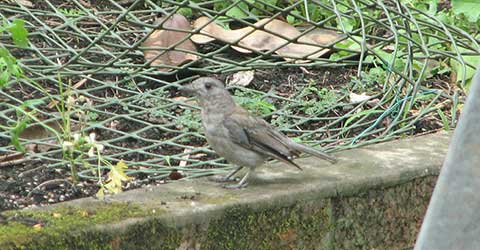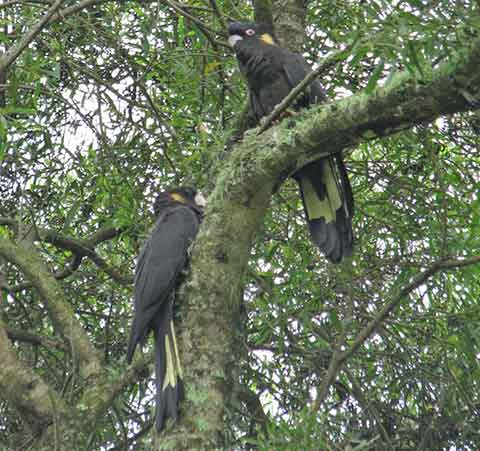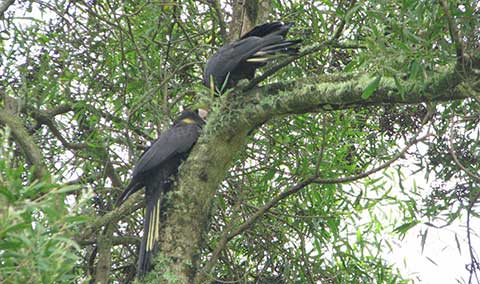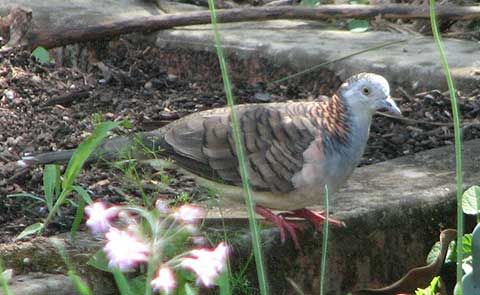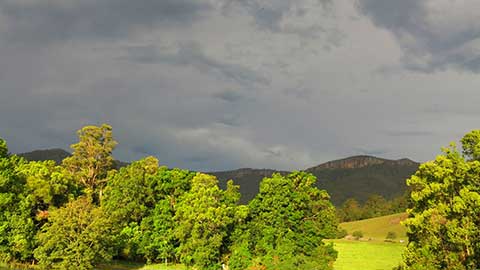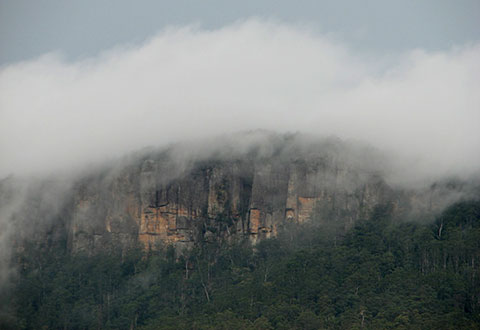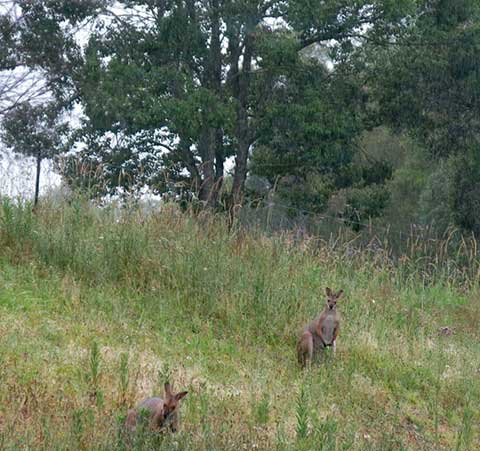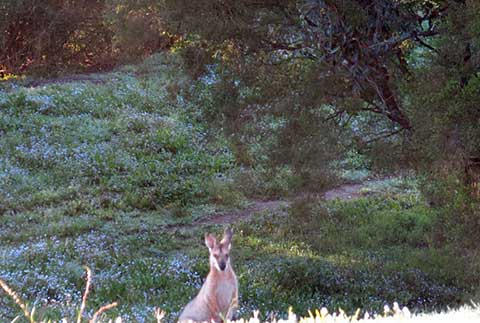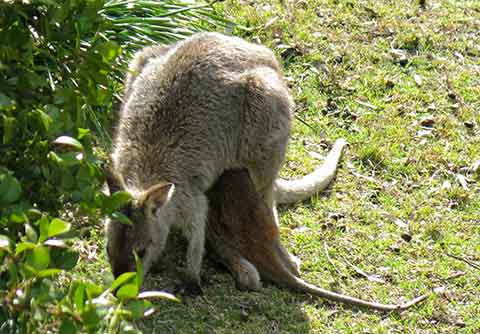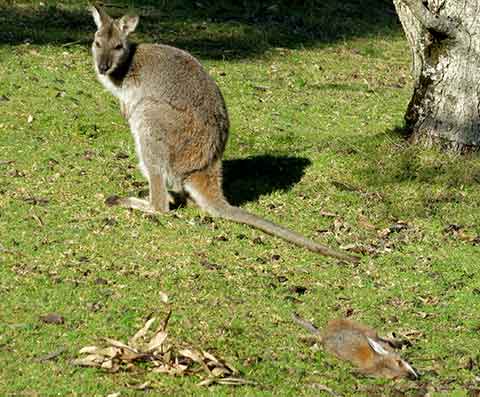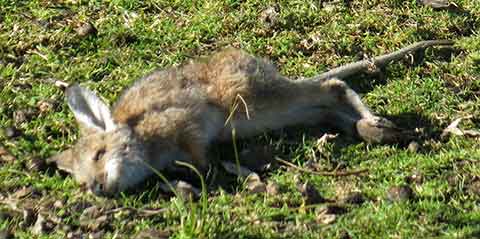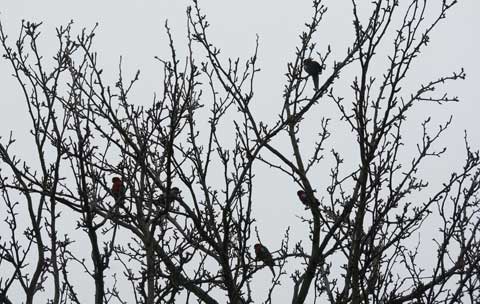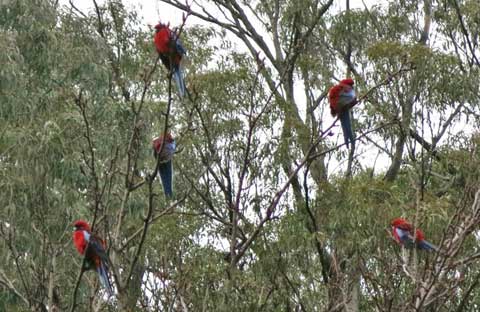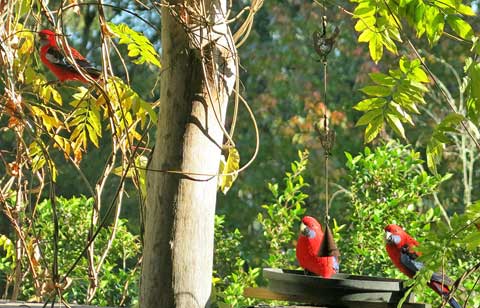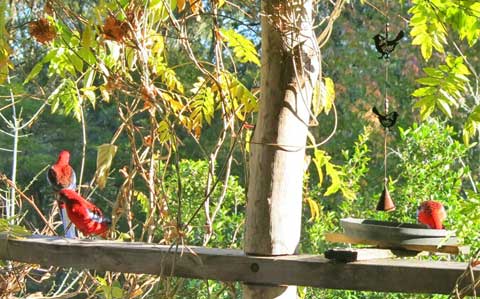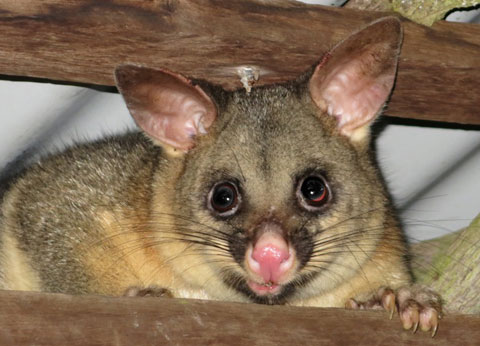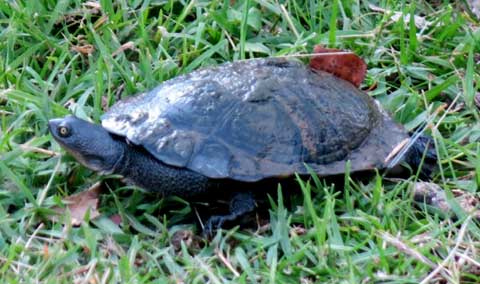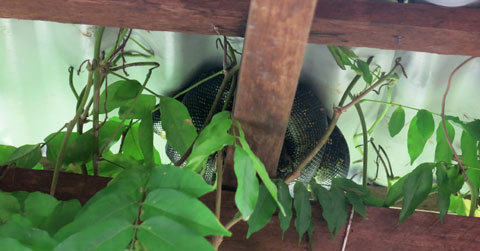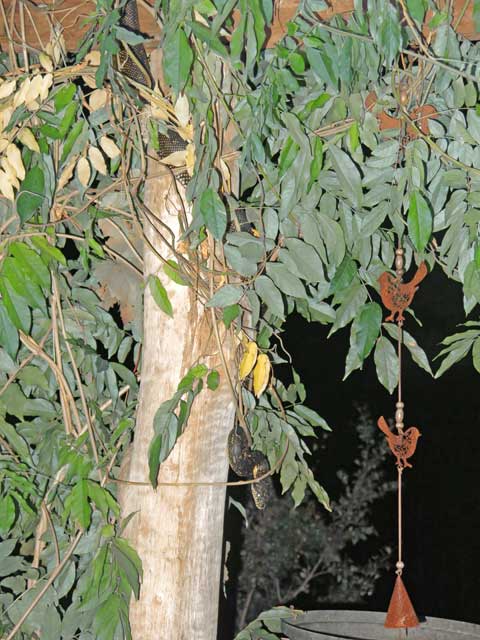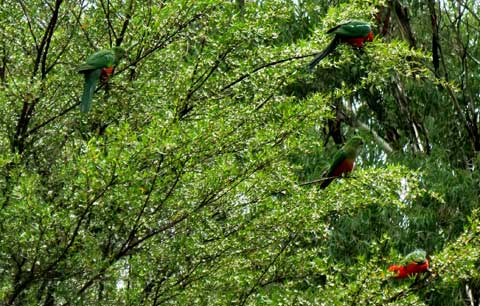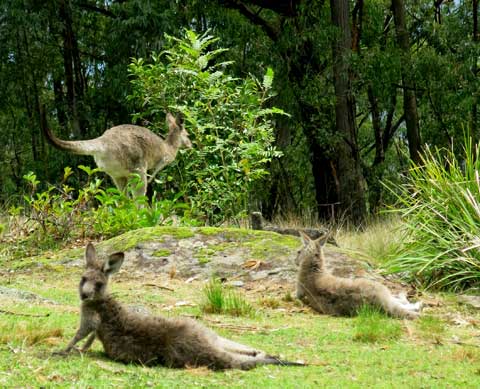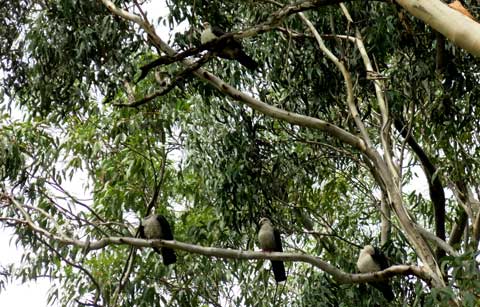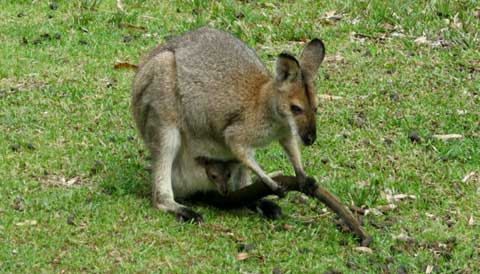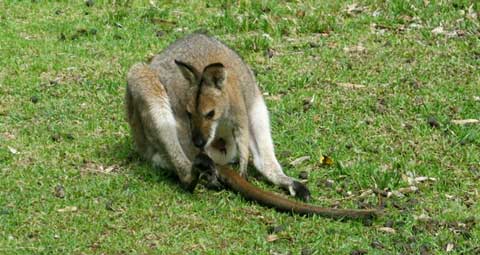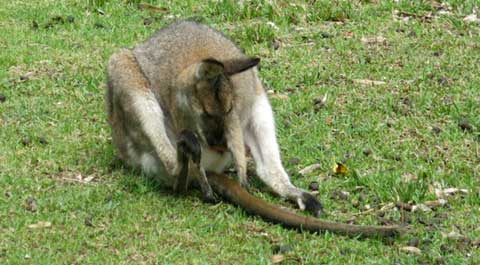The first feathered visitor of the New Year was an Azure Kingfisher, a beautiful little bird, a visitor that sadly will not be leaving.
I found it lying on the back verandah, presumedly killed when it flew into the glass doors.
If this is to be a problem I will have to hang feathers all round, but so far I hadn’t heard any ‘thunks’. I am hoping this is a one-off.
Next newly sighted feathered visitor was this unspectacular little bird, that I think is a female Rufous Whistler.
I have been hearing a very melodious series of calls that I think it was making. I hope somebody more knowledgeable can confirm its identity for me.
On the same day, fine after days of rain, I heard the unmistakable and extremely unmelodious calls of the Yellowtailed Black Cockatoos, perched in trees very close to the house.
I thought there were two, but then an incessant rusty whining led me to see a smaller third one, which I expect is the young. The father seemed to feed it — do they? — the eye ring and bill colour of the young are like a female’s. Or was this the female?
Black Cockies are old rainy weather friends, and the similar proximity of densely forested steep gullies and slopes below the escarpment would make good habitat for them. I’ll raise and plant more of the local she-oaks to tempt them back.
